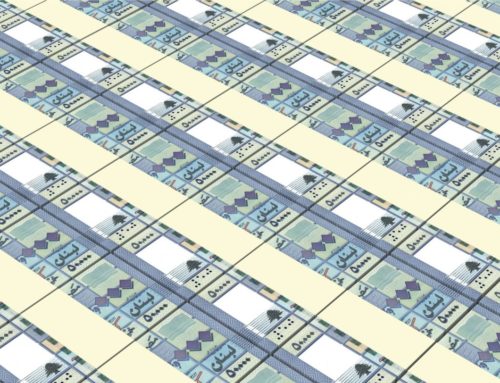Silicon Valley Bank (SVB), the 16th largest bank in the United States of America and the largest bank by deposits in Silicon Valley[1], made headlines recently after failing to a bank run. Headquartered in Silicon Valley, the global center for technology and innovation, SVB had become the go-to bank for nearly half of all venture-backed tech startups[2].
How did SVB collapse?
The collapse comes as an organic outcome of the economic struggles that the world has witnessed in recent years, from Covid and the devastating financial repercussions that derived therefrom, to the ongoing Russia-Ukraine war that still bears adverse consequences on the global economy to date. In this article we will focus on the repercussions of these failures on the banking system from a macro perspective, rather than on the micro or technical side.
In short, after nearly 15 years of near-zero interest rates, the Federal Reserve began to slowly raise interest rates to try and tame rapid inflation which led to (among other things) the decline of the long term US treasury bonds that SVB and so many other banks had heavily invested in. The devaluation of such securities was directly and immediately reflected in the US banks’ balance sheets. At the same time, rate hikes directly affected growth and technology stocks which lead to major layoffs: the tech world suddenly began to suffer. Most tech companies, non-coincidentally, came from Silicon Valley and banked with SVB. All that forced SVB to sell a number of treasury bonds at a major loss to shore up its balance sheet, amidst depositors needing liquidity. Venture capital firms panicked, and depositors followed suit. 42 billion dollars were withdrawn from SVB in a single day[3]. On March 10, 2023, SVB was seized and placed under the receivership of the Federal Deposit Insurance Corporation (FDIC). According to Moody’s Investor Service, the majority of the unsecured depositors are expected to recover their money.[4]
Any similarities with the Lebanese banking system collapse?
SVB invested a large portion of depositors’ money in US treasury bonds whereas Lebanese banks “invested” depositors’ money in certificates of deposit with the Lebanese Central Bank (the “LCB”). The LCB in its turn, used such deposits to finance mainly (i) the very onerous interest rates granted in exchange of the certificates of deposit, (ii) the artificial peg of the Lebanese Pounds to the US Dollar and (iii) government spending. Let us not get into the details of how and why the crash happened as these would require technical experts in banking and finance, political science and behavioral psychology. In short, with the October 2019 uprising, depositors quickly turned to their banks to withdraw their money (that, debatably, the banks no longer had) and that bank run forced the banks to close down for several weeks. Four years later, depositors’ money remains nowhere to be seen.
SVB’s collapse is all about the lack of investment diversification (albeit in a safe product), whereas the Lebanese banking system’s collapse was practically due to the Lebanese financial system being a state-sponsored Ponzi scheme, with banks as the engine room (personal opinion alert). The common denominator here is the lack of diversification, which, when shove comes to push, creates movements of panic and leads to depositors losing their trust.
The banking system revolves around trust
The key term here is trust, without which banks would not even exist. Depositors must trust that their money is safe in the bank with little to no control over. In reality, the basic principle of banks consists of investing depositors’ money using best risk and liquidity management practices, in order to generate revenues and potentially pay the depositors an interest on the deposits, with a promise to fulfill withdrawal requests without delays. With the various reporting duties that banks owe the public, any mishap (or potential mishap) is bound to alarm depositors, and once we go down that road, it normally ends in a bank run and total collapse.
SVB lost depositors’ trust when it announced it had taken a major hit by selling treasury bonds. Although reversible, it shows that its investment decisions were not as diligent as required by depositors to entrust it with its lifesavings.
In Lebanon, banks enforced de facto capital controls to anticipate bank runs. Here, it’s a system failure. The whole banking system is on the brink of collapse.
Credit Suisse falls too… Where do we go from here?
SVB’s collapse remains thus far an isolated incident. It could go both ways from here: it can lead to reforms to the banking system in the same manner Enron paved the way to corporate governance reforms in 2001. It can also lead to a systemic meltdown of the banking system. And the reaction will be key.
Credit Suisse was recently going down the same path, until UBS agreed to buy it in an emergency rescue deal last Sunday. Understandably so, Credit Suisse’s shareholders took a major hit as the sale was made for just CHF 0.76 cents per share, down from CHF 1.86 two days before. Extraordinarily, the deal went through without shareholders’ approval after the Swiss federal council issued an emergency ordinance to make sure the deal goes through[5]. The depositors remain safe…for now!
A revamp of international banking regulations now seems indispensable. Implementing higher cash reserve policies, exercising closer controls over banks’ investment decisions, and many other remedies come to mind. Most relevantly, banks will have to be coerced to diversify their investment portfolios to minimize risks on deposits.
As for Lebanon, trust in the banking system seems impossible to salvage after four years of arbitrary deposit freeze and draconian capital controls. However, political stability, serious reform plans, change of personnel and international support could still pave the way to a positive restructuring of the system. Banks, currently the villains of a broken system, may still become saviors and lead the way to creating a newly-shaped productive economy, that is not solely dependent on remittances.
[1] www.federalreserve.gov
[2] https://www.theguardian.com/technology/2023/mar/15/silicon-valley-bank-failure-industries-investors-rattled
[3] https://edition.cnn.com/2023/03/14/tech/viral-bank-run/index.html#:~:text=Customers%20withdrew%20%2442%20billion%20in,said%20in%20a%20regulatory%20filing.
[4] https://www.moodys.com/research/Moodys-downgrades-SVB-Financial-Group-senior-unsecured-to-C-from–PR_474735
[5] https://edition.cnn.com/2023/03/19/business/credit-suisse-ubs-rescue/index.html




